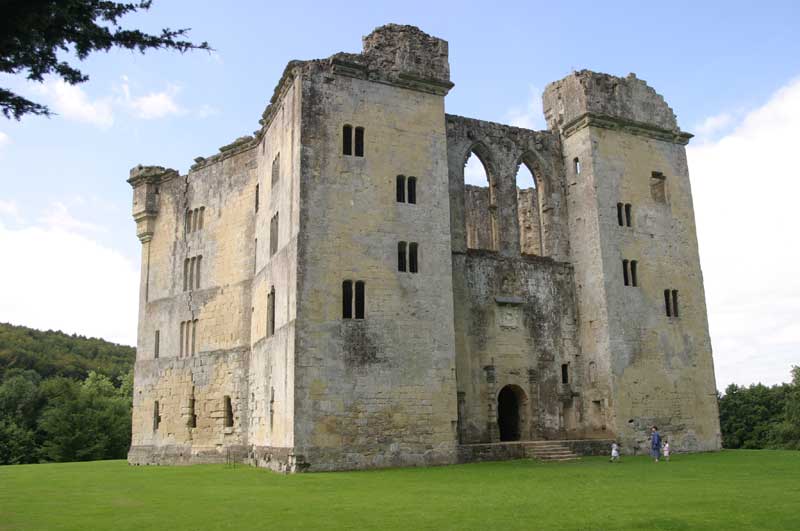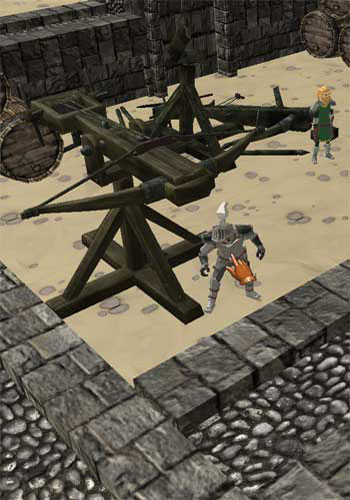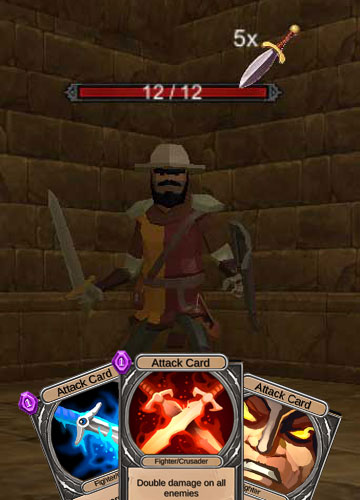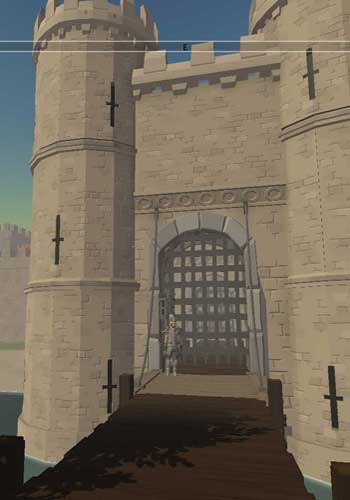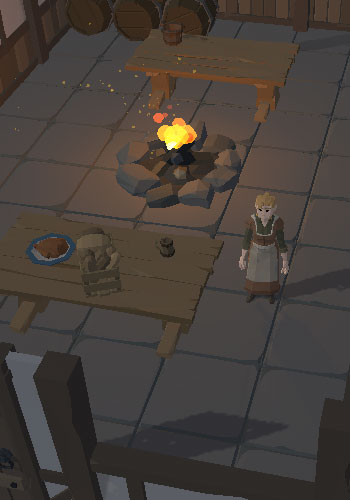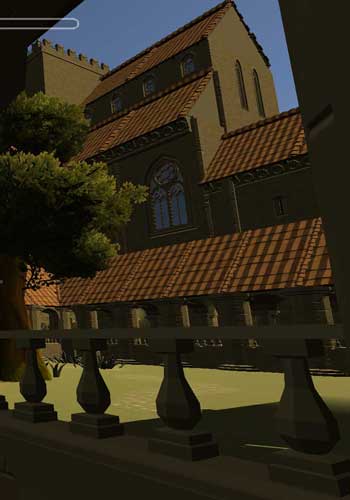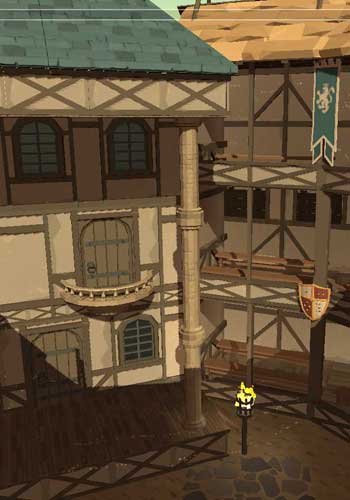 ondon is the capital of England and has been one of the most important cities in the country since Roman times when it was called Lundinium. It had the name Augusta for a short time. The key to its success was its position on the Thames near a bridge with roads and a port. After the Romans left Britain in the fifth century the Saxons took their place.
ondon is the capital of England and has been one of the most important cities in the country since Roman times when it was called Lundinium. It had the name Augusta for a short time. The key to its success was its position on the Thames near a bridge with roads and a port. After the Romans left Britain in the fifth century the Saxons took their place.Tower of London
 hortly after becoming King of England in 1066 William the Conqueror constructed an earth and timber castle in the corner of the old Roman city walls of London. Around this was dug a ditch and a bank was formed with a wooden palisade on top. From this point William could command London and monitor all ship movements up and down the river Thames. About ten years after the Conquest William decided to strengthen the castle. Gundulf the Bishop of Rochester, whose building techniques were admired by William, was brought to London to design and build the new keep. The foundations were laid in 1078 and the structure was completed in the reign of William Rufus in 1097. This is now known as the White Tower after King Henry III whitewashed the exterior. The tower has walls fifteen feet thick at the base, a chapel dedicated to St John the Evangelist taking up two of the upper floors, a 40 foot deep well and more than one crypt. Building work again commenced in around 1189 when the chancellor of the time William Longchamp the Bishop of Ely ordered the enlargement of the bailey that surrounded the tower.
hortly after becoming King of England in 1066 William the Conqueror constructed an earth and timber castle in the corner of the old Roman city walls of London. Around this was dug a ditch and a bank was formed with a wooden palisade on top. From this point William could command London and monitor all ship movements up and down the river Thames. About ten years after the Conquest William decided to strengthen the castle. Gundulf the Bishop of Rochester, whose building techniques were admired by William, was brought to London to design and build the new keep. The foundations were laid in 1078 and the structure was completed in the reign of William Rufus in 1097. This is now known as the White Tower after King Henry III whitewashed the exterior. The tower has walls fifteen feet thick at the base, a chapel dedicated to St John the Evangelist taking up two of the upper floors, a 40 foot deep well and more than one crypt. Building work again commenced in around 1189 when the chancellor of the time William Longchamp the Bishop of Ely ordered the enlargement of the bailey that surrounded the tower.
When King Henry III became King he began improving of the area of the castle between the Tower and the river by building the Wakefield and Lanthorn Towers. Henry used the Wakefield Tower, which is the second largest tower of the castle, as he own private residence. Between 1275 and 1285 King Edward I spent large sums of money improving the fortifications. A new moat was dug and a curtain wall was built around it. The land between the Tower and the river was levelled and new apartments were built on the shore. Edward had a complex of gates added which meant it was extremely difficult to attack the castle through the main land entrance.
Westminster Abbey
 horney Island is one of several small islands that formed part of the River Thames west of the city of London. Several streams entered the river at that point creating a marshy landscape covered with thickets and wild animals. On that landscape a religious community grew up in the dark ages. Suggestions have been made that there was a Roman temple dedicated to Apollo on the site. This was later replaced by a Christian building. Sebert, a Saxon who died in the early seventh century, may have been the founder of a religious community on the site of Westminster Abbey but this may be just a story. A tomb with the remains of Sebert and his wife Ethelgoda exists in the Abbey today after being moved first by Edward the Confessor and then by King Henry III when rebuilding work was done.
horney Island is one of several small islands that formed part of the River Thames west of the city of London. Several streams entered the river at that point creating a marshy landscape covered with thickets and wild animals. On that landscape a religious community grew up in the dark ages. Suggestions have been made that there was a Roman temple dedicated to Apollo on the site. This was later replaced by a Christian building. Sebert, a Saxon who died in the early seventh century, may have been the founder of a religious community on the site of Westminster Abbey but this may be just a story. A tomb with the remains of Sebert and his wife Ethelgoda exists in the Abbey today after being moved first by Edward the Confessor and then by King Henry III when rebuilding work was done.
The real story of Westminster Abbey begins with Edward the Confessor. In 1042 Edward returned from exile after the death of Harthacanute. Edward had made a vow of pilgrimage to Rome, but the nobles that were advising him persuaded the King that his position as head of the country was too important to go on such a risky journey. The Pope sent word that Edward was released from the vow if he instead built a church in honour of St. Peter. To this Edward agreed and in 1050 work began on the Thorney Island site. The abbey was dedicated in 1065 just weeks before Edward died. He was buried in his new church in January of 1066. The new church was the site of another important event in 1066 when William the Conqueror was crowned King of England on 25 December.
The body of Edward was moved first in the reign of King Henry II and then again by his grandson King Henry III who began rebuilding the church starting with the Lady Chapel in around 1220. In 1245, in tribute to Edward the Confessor, Henry started much larger and expensive reconstruction work of the whole church. Enough of the new building was ready in 1269 for the church to be consecrated and the coffin of the Confessor to be moved again into its new home.
The abbey has been the main site for the coronation of English Kings and Queens since then and holds the remains of both the nobility and ordinary people. A Lady Chapel was constructed at the east end of the cathedral and, as it holds the remains of King Henry VII, is known as the Henry VII Chapel. The Italian scupltor Torrigiano was given the job of designing and constructing the King's tomb. Also buried here are the monarchs Queen Elizabeth I and Mary Queen of Scots.


